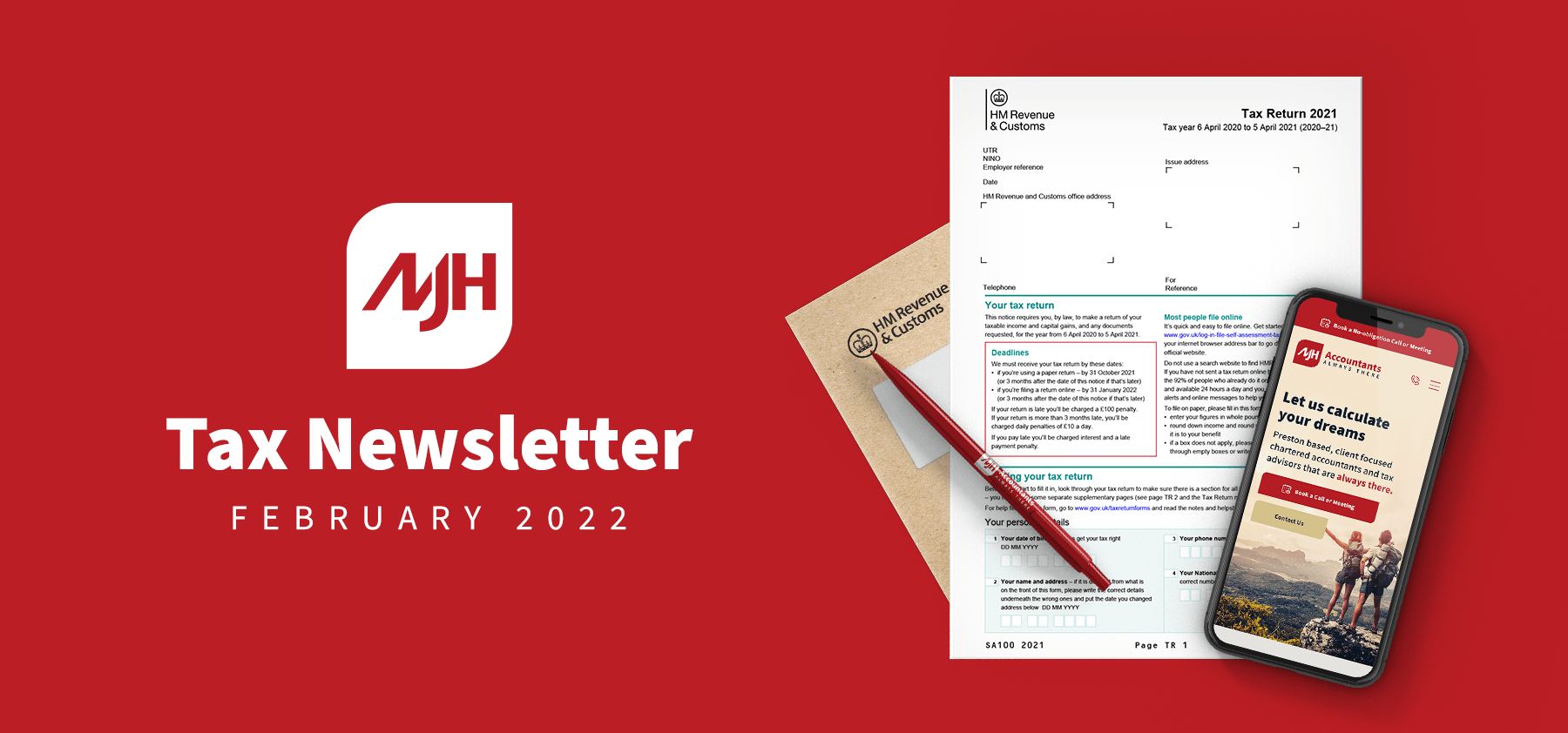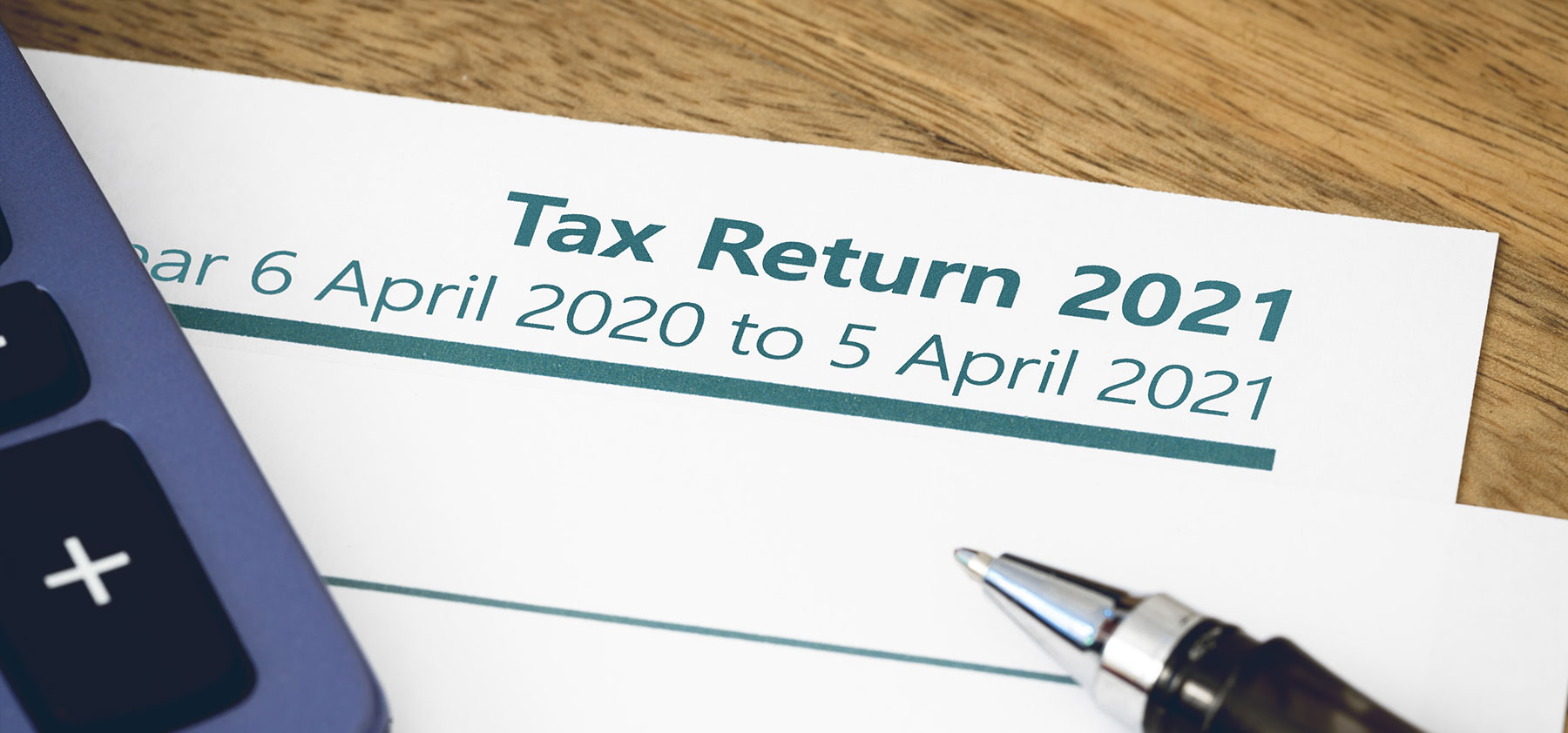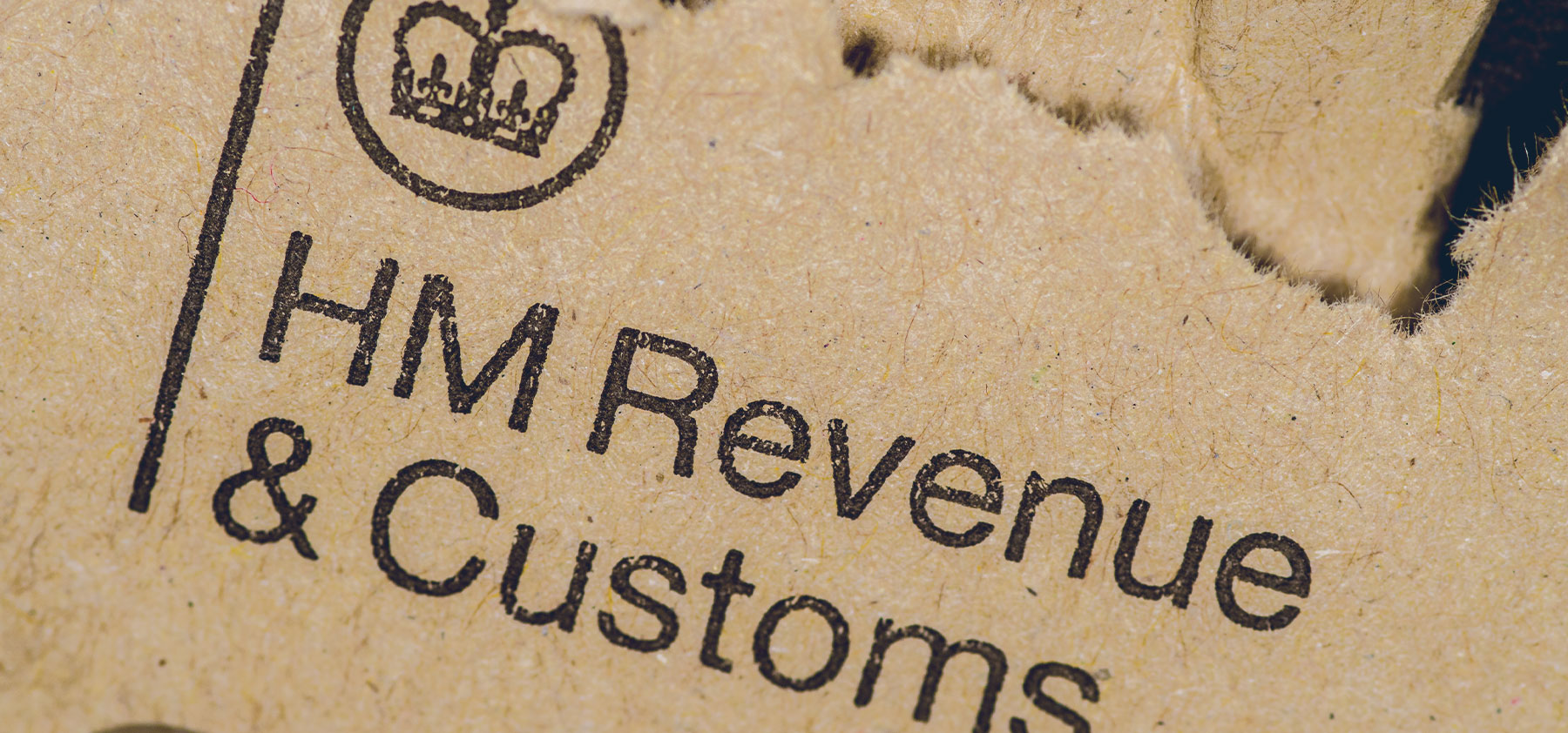
Latest news round-up
Late tax returns
On 7 January, HMRC announced that there would be no automatic late filing penalties provided that tax returns are filed by midnight on 28 February 2022. Anyone seeking to take advantage of the extra month should keep in mind that it is the penalty trigger, not the filing deadline itself, that has moved. This means that where a return is filed in February there will be no penalty, but the enquiry window will be extended to the relevant quarter day in 2023, i.e. 30 April.
There will also be no late payment penalty where outstanding tax is paid in full, or a time to pay arrangement is agreed, by 1 April 2022. Interest will still apply from 1 February.
VAT penalty overhaul delayed
The default surcharge system of penalties for late VAT returns and payments was scheduled to be replaced in April 2022, coinciding with the extension of Making Tax Digital for VAT to all VAT-registered businesses. However, the roll out date has been pushed back to 1 January 2023.
Business rate relief abuse
A perceived loophole that allows owners of multiple properties to avoid council tax is to be closed from April 2023. Under the current system, those who own second (or more) homes in England can bring the properties into the business rates regime by stating an intention to let them to holiday makers. Small business rates relief can then be claimed.
In practice, there is concern that many of these statements are false, and the reality is that the properties remain empty for much of the time. No proof of occupation as a holiday let is required.
From April 2023, this will change. In order for a property to fall within the business rates regime, the owner will need to provide evidence that it has been available to let for at least 140 days, and actually let for 70 days, in the previous year, and that it will be available in the coming year for 140 days. The lettings must be short-term, and on a commercial basis.
Draft legislation should make the details of these tests clear in due course. It remains to be seen as to whether there will be similar elections available as exist under the furnished holiday lettings legislation to protect periods of sparse activity.
Other news
- The current Finance Bill has been amended to ensure HMRC can use the Discovery Assessment provisions in s. 29 TMA 1970 to recover unpaid tax arising from the higher income child benefit charge or certain pension-related charges. Sections 95-97 achieve this by shifting the focus of the legislation away from “undeclared income” to “an amount of tax that ought to have been assessed”. Of particular interest is s. 95(3), which provides that the amendments will have retrospective effect, unless the assessment is subject to an appeal notice that was given to HMRC before 30 June 2021.
- HMRC is inviting responses to a consultation on uncertain tax treatment, in relation to new rules affecting large businesses from 1 April 2022.
- HMRC is considering the situation where an employee is reimbursed by the employer for the actual cost of electricity used in charging an electric vehicle for business purposes.
- This is to determine what evidence can be provided, to allow the employer to claim the related VAT, subject to the normal rules. Simplification measures are also being considered.
- Finally, the government has opted not to change the VAT status of land and property supplies to taxable by default following consideration.
VAT – charged too much?
Suppose that a business has been paying its suppliers’ invoices for many years without really giving too much thought to the VAT being applied. The business engages an accountant to assist with its VAT returns due to an increase in business activity. The accountant immediately spots that one supplier has been incorrectly charging standard rate VAT instead of the correct reduced rate of 5%. On inspection, this is a long-term issue going back many years.
The business has a problem, because the VAT legislation requires VAT to have been correctly charged at the correct rate in order for it to be able to be claimed as input tax on the VAT return. This underlines why it is so important to check VAT invoices as and when they are received.
The business owner believes things aren’t as bad as the accountant is making out. Unfortunately, the input tax reclaims are errors and will need to be corrected going back four years. There is no question of the error being deliberate or fraudulent, so the longer 20-year assessment window won’t apply.
The errors will need to be either notified on the next VAT return (if the total net errors exceed £10,000, or if they are less than £50,000 and less than 1% of the box 6 total on the relevant return), or by using Form 652.
To work out what the corrective figure needs to be, the payments to the supplier in question for the previous four years will need to be treated as if 5% VAT was included using the VAT fraction 5/105.
Let’s say that on investigation, the total payments were £100,000 plus £20,000 in “VAT”. The business has claimed £20,000 in input tax in this period. However, the input tax entitlement is only £120,000 x 5/105 = £5,715. The VAT error is therefore £14,285. This will need to be disclosed in writing, unless it is less than 1% of the box 6 figure. Unfortunately, late payment interest will also apply if the error can’t be disclosed via the return.
The business should also ask the supplier for a VAT credit for the overpaid amount, i.e. £100,000 x 15% = £15,000.
Does an employee loan always need reporting to HMRC?
Employee loans are an area where businesses often get confused. The first thing many owners will think of is the temporary corporation tax charge under s. 455. However, that only applies if the loanee is a participator of a close company. It doesn’t apply to regular employees – even directors – unless they also own/control at least 5% of the company’s share capital.
However, that isn’t the end of the tax issues. Employee loans can be a taxable benefit in kind (BIK) that need reporting on form P11D if they are made on beneficial terms. Broadly, a loan to an employee will be a BIK if:
- the balance exceeds £10,000 at any point during the tax year; and
- the employee isn’t required to pay interest at a rate at least equal to HMRC’s official rate of interest (currently 2%).
Note that the first bullet about the balance exceeding £10,000 excludes any interest charged, unless it is added to the loan balance instead of being physically paid by the employee.
As the current official rate of interest is relatively low, a simple (and cheap) method of avoiding a BIK, and therefore a Class 1A liability, would be to add an interest charge at the end of the tax year, and have the employee pay this to the employer before 6 July.
However, before doing this it is worth checking to see if the loan is of a type that isn’t a taxable BIK.
A BIK won’t arise on a loan that is made by an employer that is an individual, rather than a company, and the employee is a member of their family or household. This exception doesn’t apply to company employers – even if there is only one director shareholder.
If the employer’s business includes making loans to the general public, no BIK will arise as long as the employee loan is made on similar terms.
Finally, certain loans are “qualifying” if the interest paid on them attracts relief (or would attract relief if interest were charged). Information on this type of loan can be found at EIM26136, and includes, for example, loans used to purchase an interest in a partnership, close company, etc.
Holdover relief tax trap
Some small company owners bring in adult children to take over the day to day running of the business as they approach retirement. There are many strategies used in practice. One may be to appoint the children as directors, while maintaining overall control of the share capital. However, some owners may wish to hand over full control and exit the company altogether and gift the shares to the children as well.
This involves a transfer of value, i.e. the value of the shares being gifted. However, thanks to business property relief, this is unlikely to trigger an IHT charge, unless the company is wholly or mainly carrying on investment-type activities (property-related businesses like caravan parks etc can be a grey area here). However, capital gains tax (CGT) can be an issue, as the transfer will be treated as taking place at market value.
In the absence of relief, the owner would be faced with a dry CGT bill. However, holdover relief under s. 165 TCGA 1992 can be jointly claimed by the transferor and transferees. This effectively rolls the gain up into the base cost of the shares in the hands of the recipients, and so it will not be taxed until the shares are disposed of later on. If the children pass on the shares to their own children, the process can be repeated etc.
Anti-avoidance
Gains on shares, even in UK-based companies, are only taxable if the person making the disposal is UK resident at the time of the disposal (subject to certain rules for temporary periods of non-residence). As a result, it would seem relatively simple on paper to make a gift of the shares and have the recipient leave the country before making a disposal of them.
To combat this, there is a restriction on s.165 relief where the transferee becomes non-resident within six years of the end of the tax year they received the shares in. If this occurs, the held over gain becomes taxable, and if the transferee doesn’t pay the tax due, HMRC are entitled to recover it from the transferor, i.e. the original shareholder.
Of course, there may be genuine reasons for becoming non-resident, but in most cases the motive won’t make a difference to the clawback of relief. The only possible get out is if the non-residence is in order to work overseas for no more than three years. It is advisable to inform HMRC of the intention prior to the relocation to avoid a CGT charge being assessed in the first place.
There is a further provision that applies to a gift of UK land, where an election can be made to defer the gain until disposal of the land, as non-residents are now charged to UK CGT on all UK land disposals.
February Questions and Answers
Q1. We have just purchased a second property, which we intent to occupy at weekends to escape the hectic city life. We’re both in our 50s and want to start slowing down a bit! I’ve heard that there is planning that can save tax on second homes – I believe MPs are infamous for using it. Can you explain what this is?
A: Where you genuinely occupy more than one property as a residence for at least some of the time, you are entitled to make an election to specify which one is to be treated as the main residence for the purposes of private residence relief. It doesn’t matter which property you actually live in most of the time, as long as you do occupy both as a home. This can be beneficial if the property you occupy less frequently is likely to appreciate in value more than the other. In the absence of an election, HMRC will determine which was the main residence based on available information, and may result in a larger gain being chargeable. You need to make the election within two years. HMRC’s guidance is useful here.
Q2. I’ve decided that the cash accounting scheme isn’t working for my business anymore. I’m intending to revert to standard VAT accounting from the start of the next VAT period. Do I need to notify HMRC or take any special measures?
A: You don’t need to inform HMRC, but you do need to take care to ensure you don’t miss any sales or purchase invoices during the switch. As you will be used to accounting for payments and receipts as and when they are made, there is a risk that invoices raised before the change date may be overlooked. You need to account for VAT on invoices issued or received and make good any net unpaid VAT to HMRC. However, you may be able to opt to spread any payment over six months. See VAT Notice 731 for further details.
Q3. We have been reporting our VAT returns under MTD since April 2021. As our systems are already set up and compliant with this, am I right in assuming we will already be set up for MTD for Corporation Tax as well? I don’t want to incur further costs if that is possible.
A: It would be prudent to discuss this with your software provider. CT information needs to be reported using UK GAAP principles, whereas your VAT accounting may be cash-based. It might be that the software is capable of operating on two bases contemporaneously, but it would be unwise to make that assumption. It’s also possible that your VAT periods won’t coincide with the CT reporting quarters. The staging date won’t be until 2026 at the earliest but preparing early is a good idea. Start by reviewing the recent consultation document, which details much of what is likely to be required.
February Key tax dates
- 1 – Due date for payment of Corporation Tax for accounting periods ending 30 April 2021
- 7 – Electronic VAT return and payment due for quarter ended 31 December 2021
- 19/22 – PAYE/NIC, student loan and CIS deductions due for month to 5/2/2022
- 28 – Deadline for electronic filing of self-assessment returns for 2020/21 before incurring late filing penalty following extension announced in January 2022
 Book a No-obligation Discovery Call
Book a No-obligation Discovery Call






 Book a Free Discovery Call
Book a Free Discovery Call

